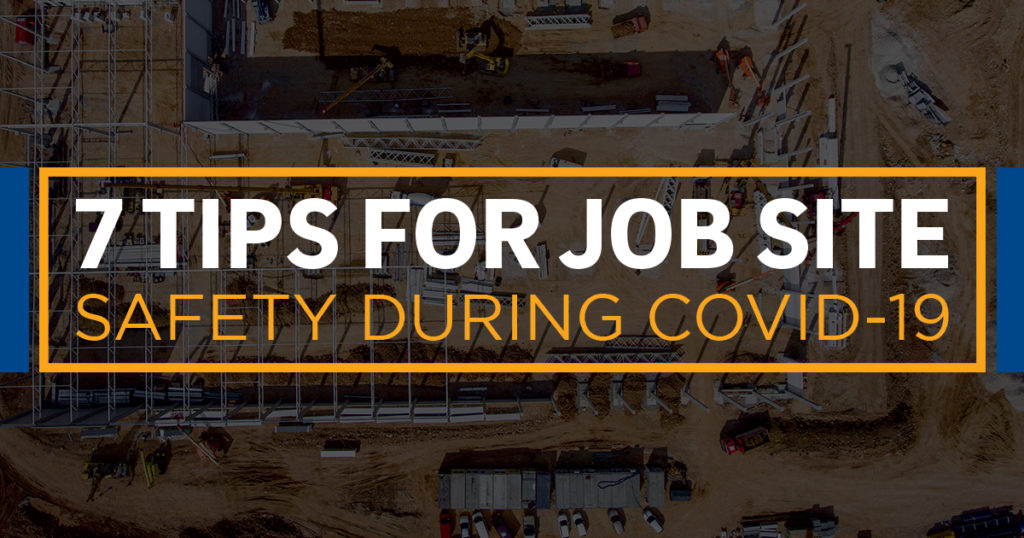Designated an essential business, construction continues across most of the country during the Coronavirus pandemic and we at Varco Pruden want you to have as much information as possible to ensure the safety of your employees while on job sites.
Based upon guidelines from the Centers for Disease Control and Prevention, Varco Pruden and parent company BlueScope Buildings North America compiled tips to help prevent the spread of COVID-19 on your job sites:
1. Do not report to work if sick
If employees develop a fever, cough, shortness of breath and/or other symptoms of respiratory illness, they should not report to work. Individuals with these symptoms should seek medical attention and not return to work until they are symptom-free for at least 72 hours or until they are cleared to return by a medical professional. If an employee lives with someone who is suspected or confirmed to have COVID-19, they should notify their supervisor.
2. Designate a representative
Designate a representative to watch for signs of sickness on the job site. If someone appears ill, ask them to leave. Do not allow them to enter occupied areas before leaving. This will help prevent the spread of germs among workers. Immediately disinfect the area the employee was working in, including any equipment they were using, once they are gone.
3. Wash hands frequently
All workers should wash hands often, for at least 20 seconds, with soap and hot running water. If the job site is large, procure additional hand washing stations from your job site sanitation provider. Alcohol-based hand sanitizers are also effective at killing germs and should contain at least 60% alcohol.
4. Limit physical contact
Practice social distancing of at least 6 feet on the job site. Hold your daily safety meeting outside of the trailer with plenty of space between people. Do not pass around a sign-in sheet and pen; instead, designate one person to take attendance. Job site supervisors may choose to forgo large meetings, instead opting for one-on-one or small group briefings. Breaks and lunches should be staggered to follow the CDC’s guidelines of limiting gatherings to 10 people or less.
5. Keep the job site clean
Workers should clean equipment at the beginning of their shift, throughout the workday and immediately before departure. High touch surfaces, such as doorknobs, should be cleaned throughout the day. Personal protection equipment should not be shared, and reusable PPE should be sanitized per the manufacturer’s guidelines prior to each use. Portable job site toilets should be sanitized at least twice per week, and job site offices, including trailers and breakrooms, should be sanitized at least twice per day. The interior of fleet vehicles should also be disinfected daily.
6. Restrict the number of visitors to the job site
By restricting visitors, you restrict germs that your employees may encounter. According to Associated General Contractors, if a visitor must be onsite, consider screening them in advance to determine whether they’ve been exposed to COVID-19.
7. Provide the tools
Provide access to the tools that will keep workers healthy. This includes providing several hand washing and hand sanitization stations throughout the job site. Make disinfecting wipes readily available. Eliminate common water coolers; instead, provide disposable water bottles or encourage employees to bring their own. Provide shoe sanitation tubs with a non-bleach sanitizer solution for workers to use prior to entering and leaving the job site.
To help educate employees about hygiene protocols, visitor restrictions, and other new policies and procedures you implement in response to COVID-19, post signage throughout your job sites. Please note, these tips are provided solely as a guideline for Builders and are not to be relied upon to prevent the spread or transmission of COVID-19 or prevent a safety violation from being issued by a jurisdictional authority.
This is not legal advice. You should continually evaluate the specific hazards at their job sites along with the Centers for Disease Control and Prevention recommendations to prevent the transmission of COVID-19.
